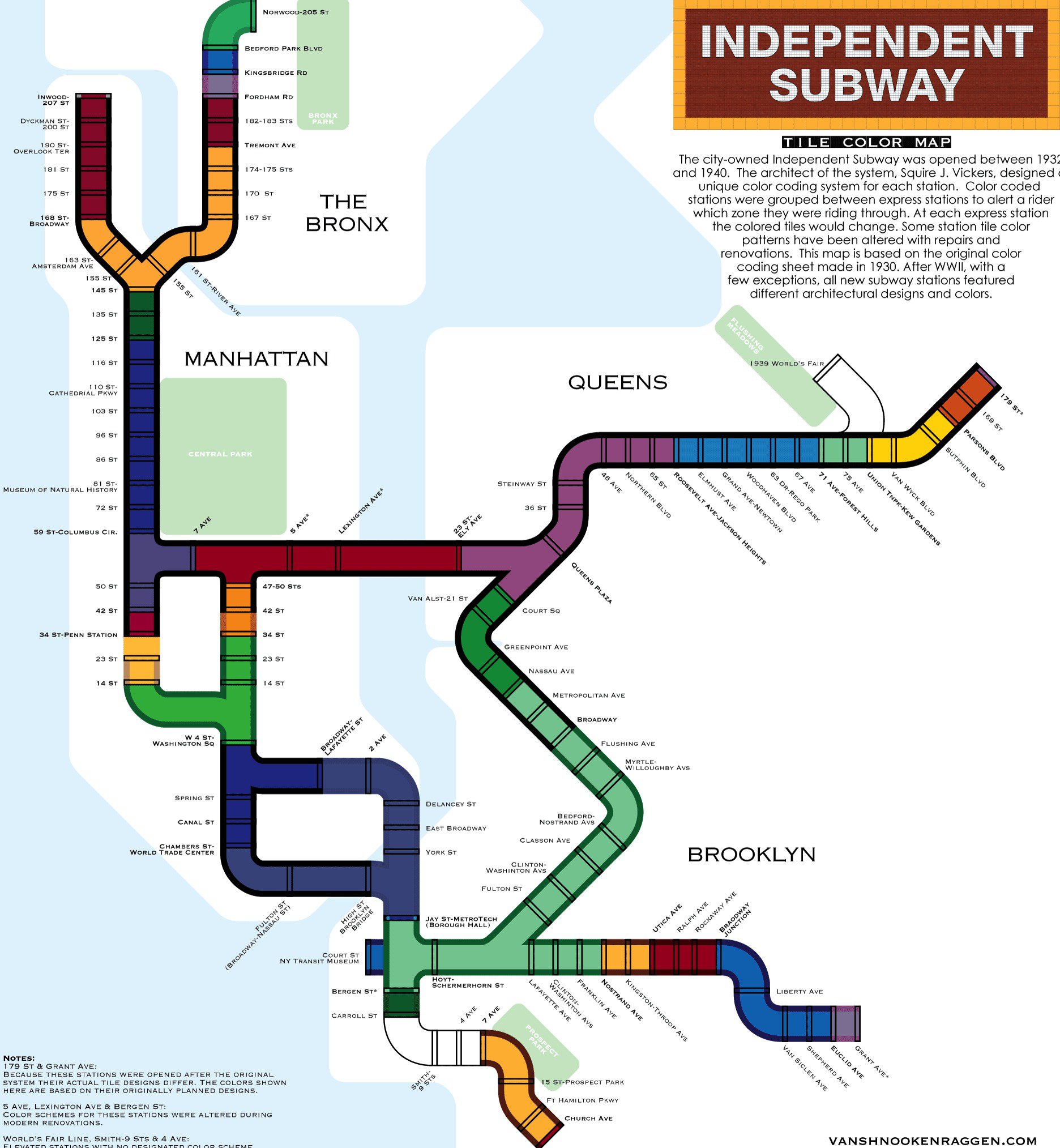Everyone knows the subway lines have colors: the 4, 5, and 6 are green, the 1, 2, and 3 are red, and the A, C, and E are blue.
Here's what maybe you didn't know: 6sqft reported that when the city-owned Independent Subway was opened between 1932 and 1940, it was the last of three former competing subway systems.
From the Independent Subway came the A, B, C, D, E, F, G, and part of the Q line.
At that time, the system's architect Squire J. Vickers designed a color coding system for each subway station.
Then, color coded stations were grouped between express stations, so riders could know what zone they were passing through.
We're talking about really old school stuff. This is what went on in the prehistoric NYC subway system before 1967.
When you passed from one express station to the next, the color of the tiles would change. If you look now, you can still see most of the those old-time tiles.
[anad]
Sadly, some of the color patterns have changed in the renovations in all the years that have passed, but the system map is based on the original color coding sheet from 1930.
After World War II, almost all new subway stations had their own architectural designs and colors.
The color variations are understated, but kind of nerdy. They're grouped by color family. All the five primary colors are grouped together, and then different color shades are used within those families.
Presumably, this color shading system was used as a means for helping passengers remember when they should switch from the express to local on the way home from work.
So, next time you're on an express train on one of the lines listed above, take note of how the tiles change colors with every stop.
If you're on a local change, enjoy the consistent tile coloring. It's a nice, refreshing, blast from the past.
Check out Someone Just Solved All of NYC's Subway Troubles with These 5 Dream Lines.
[via 6sqft] [Feature Image Courtesy 6sqft]



